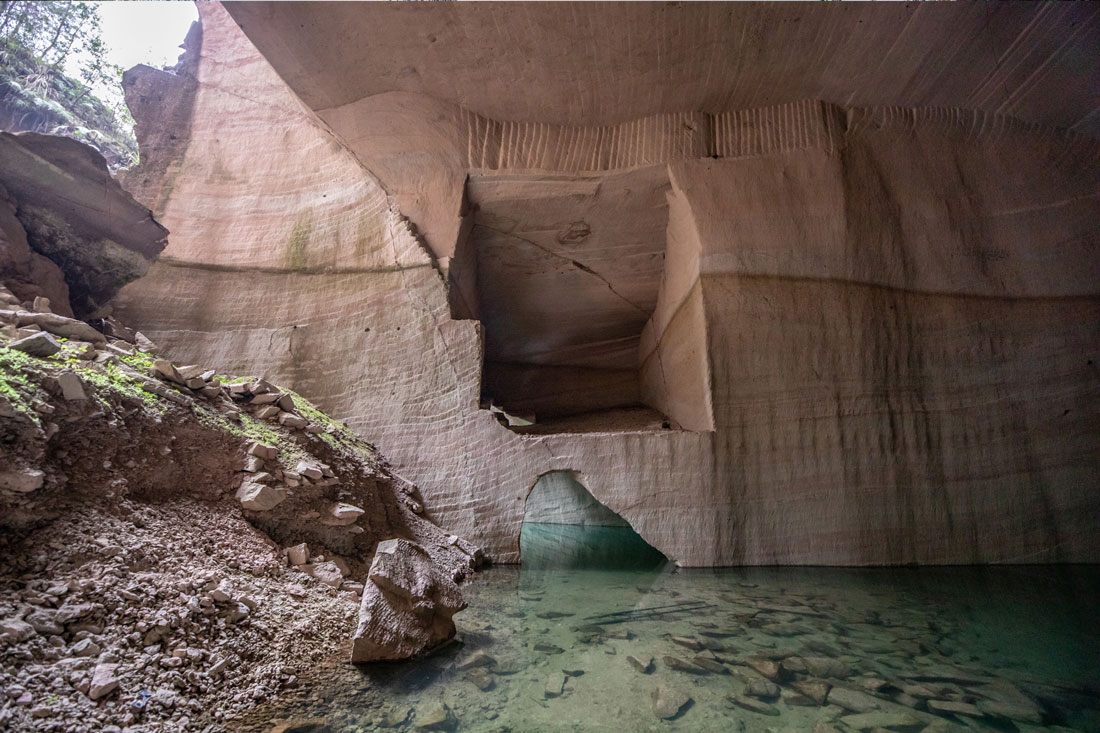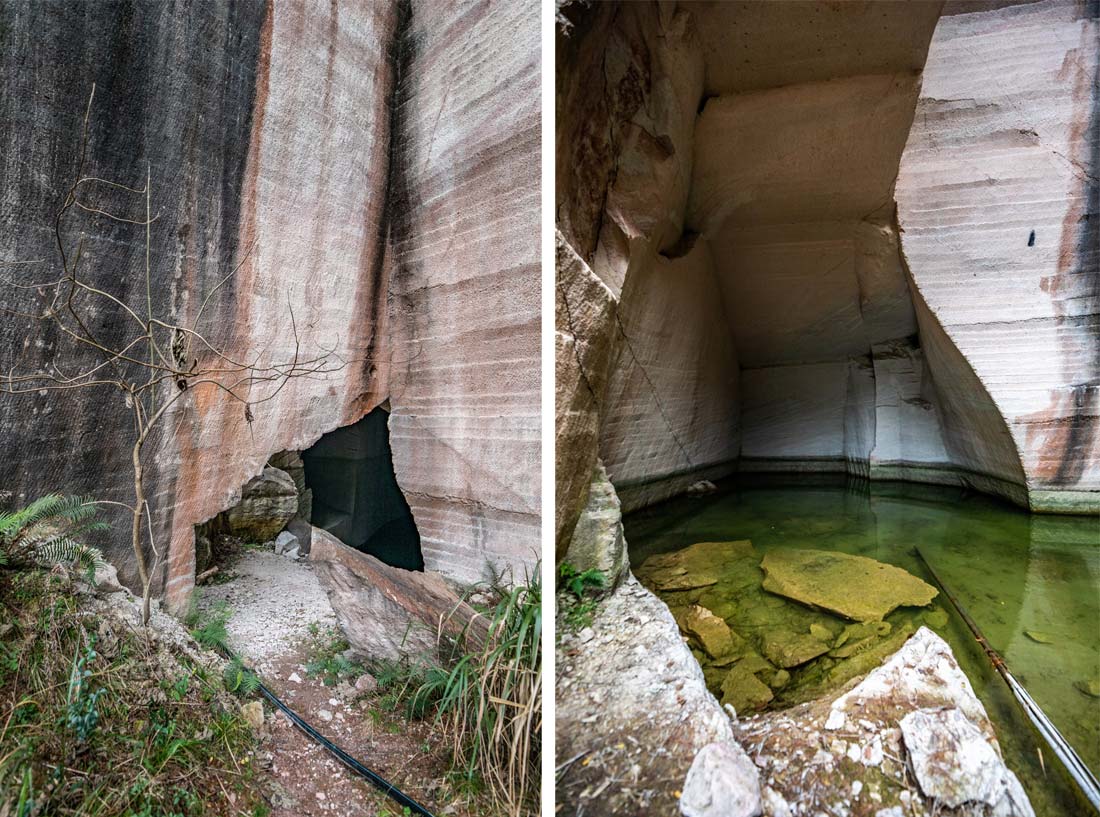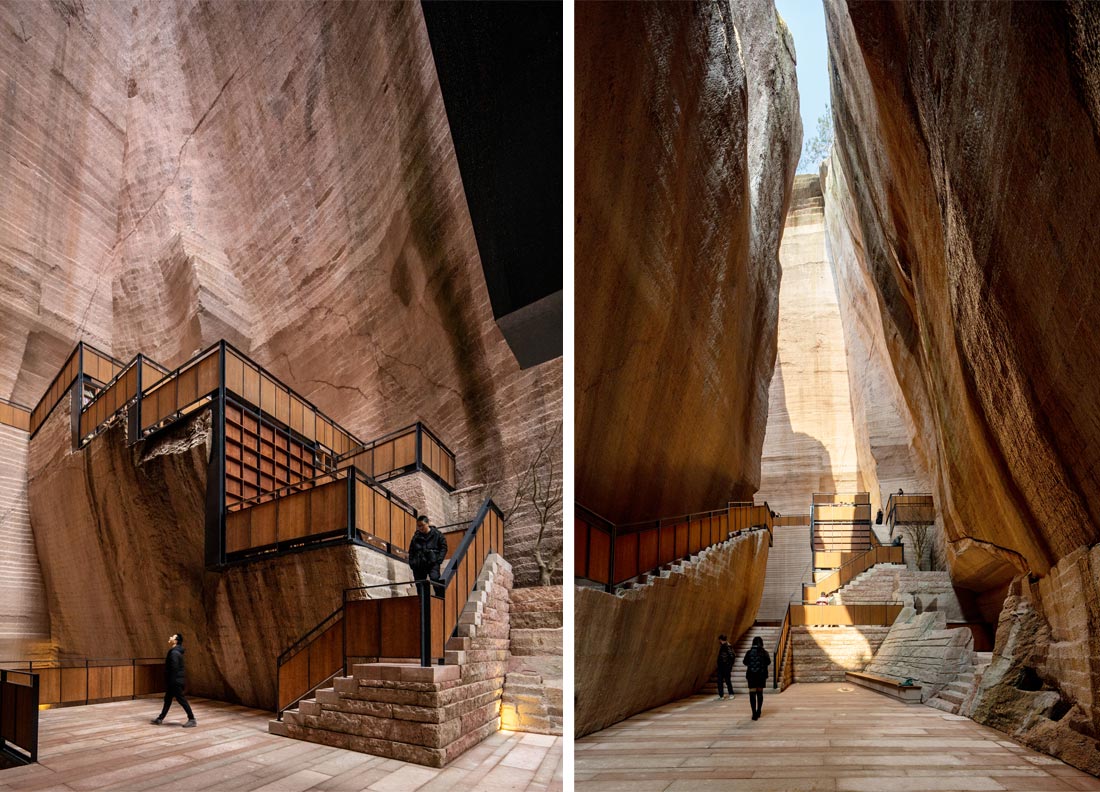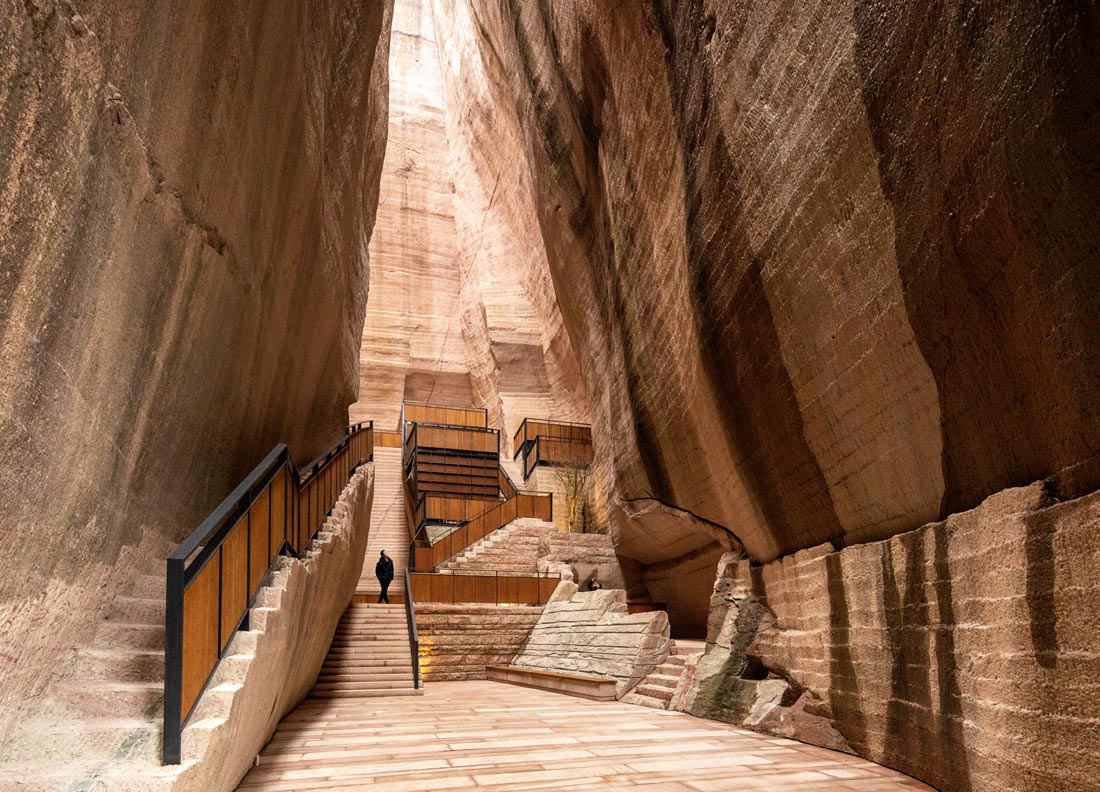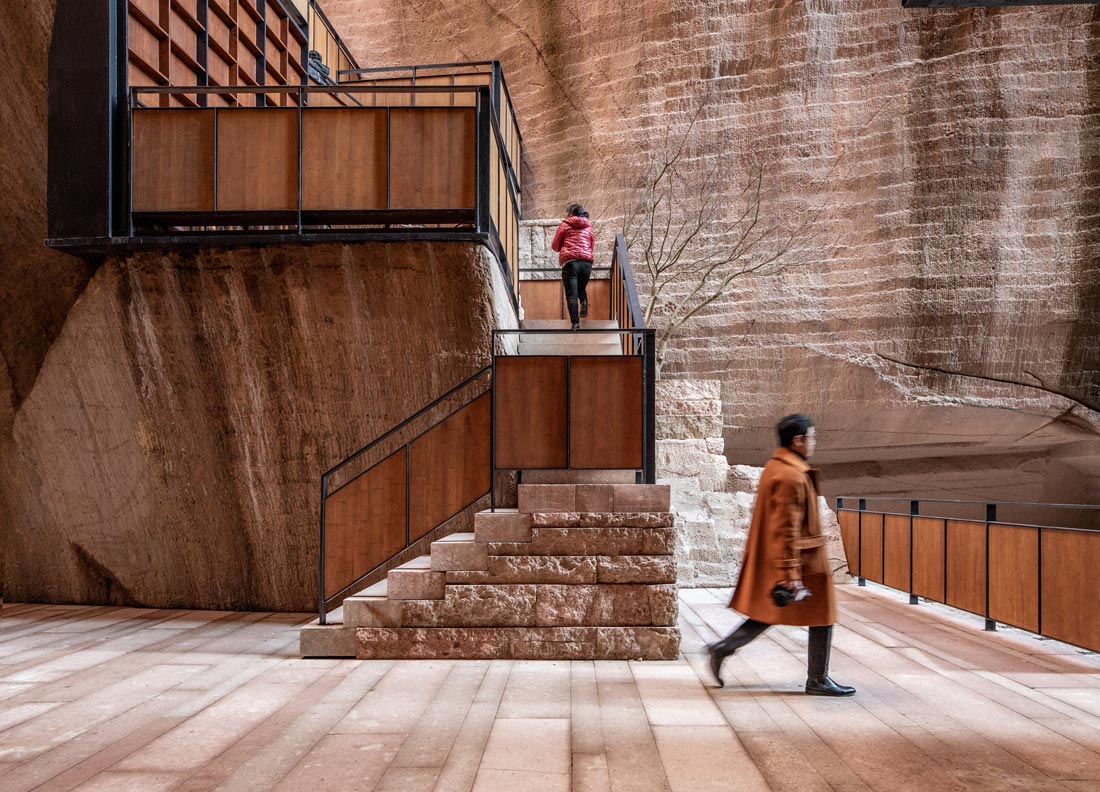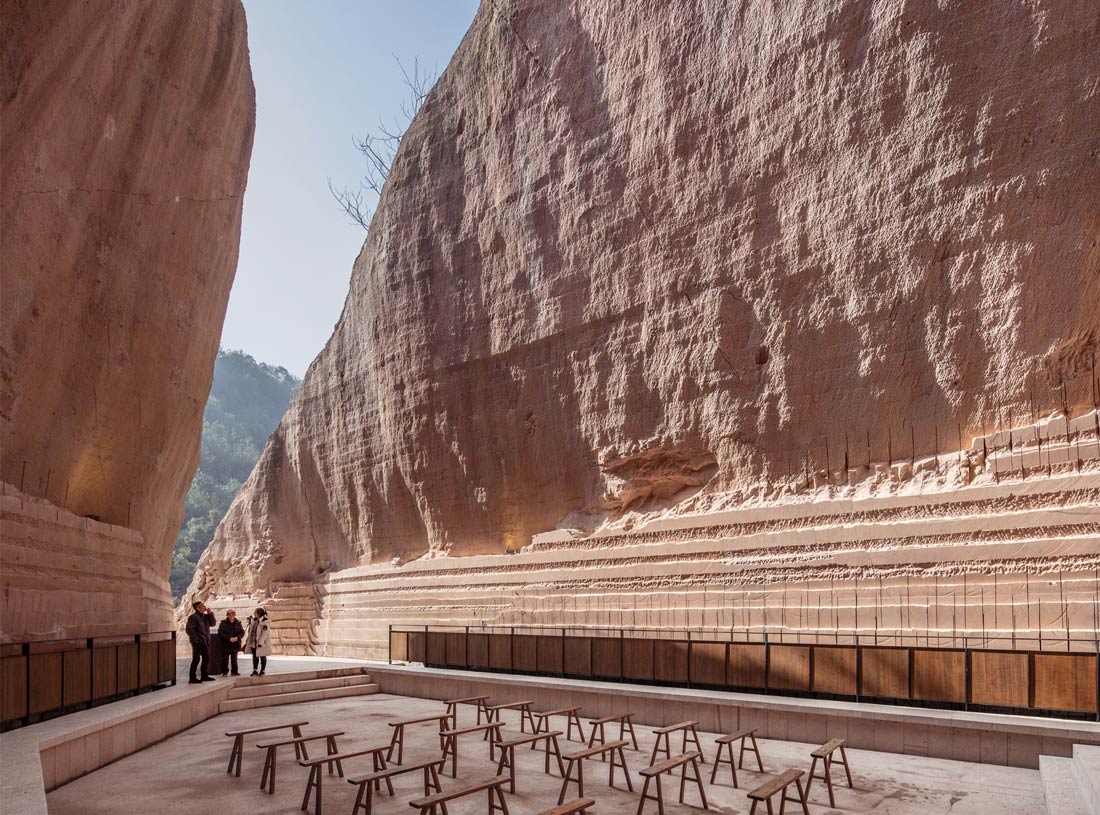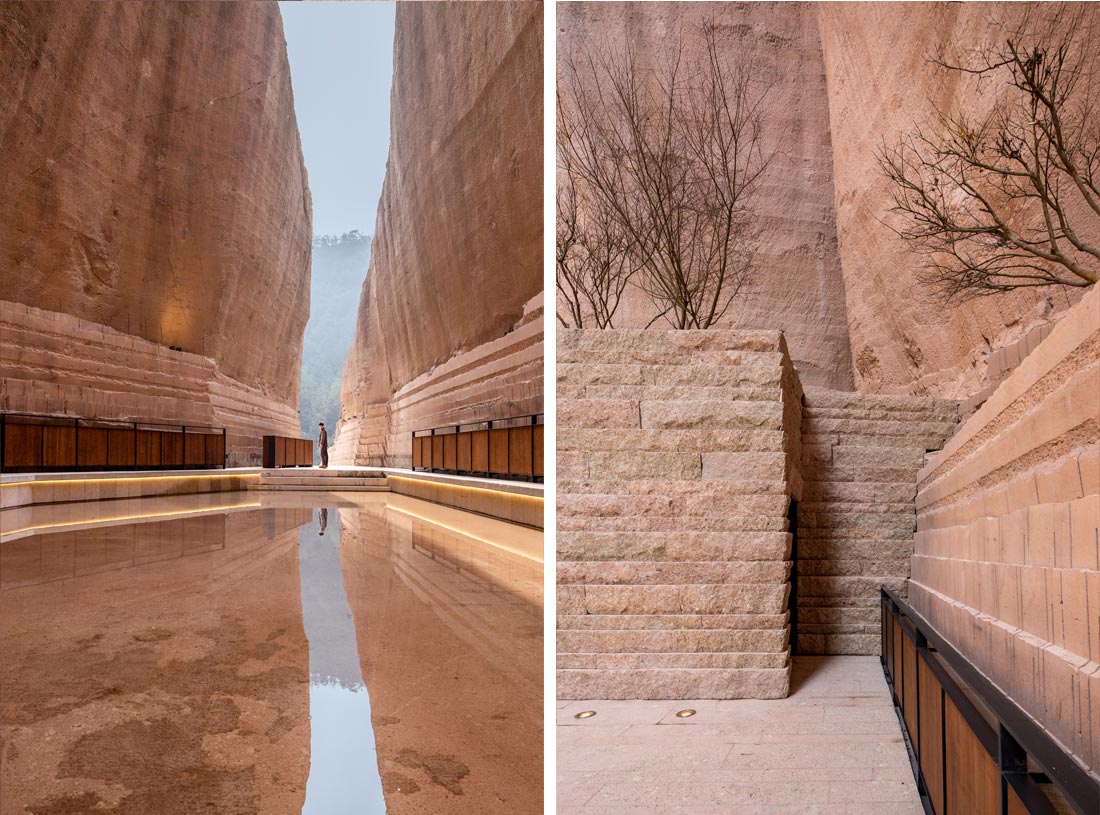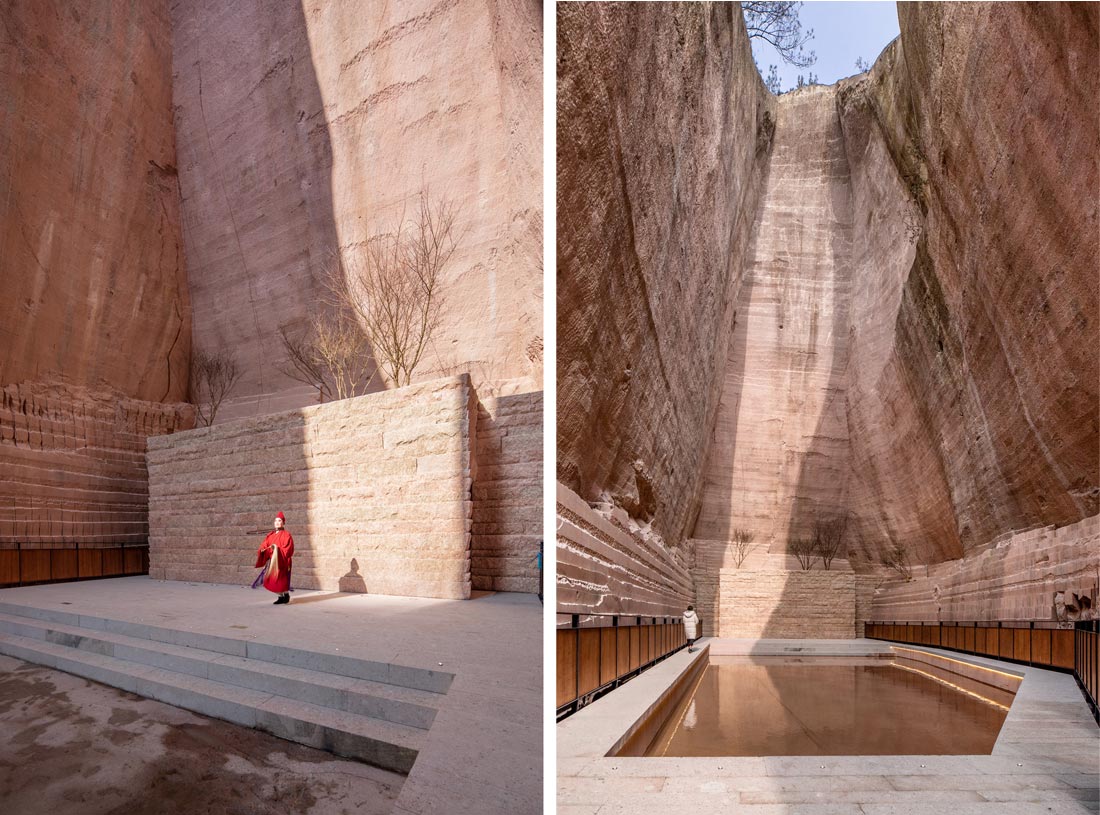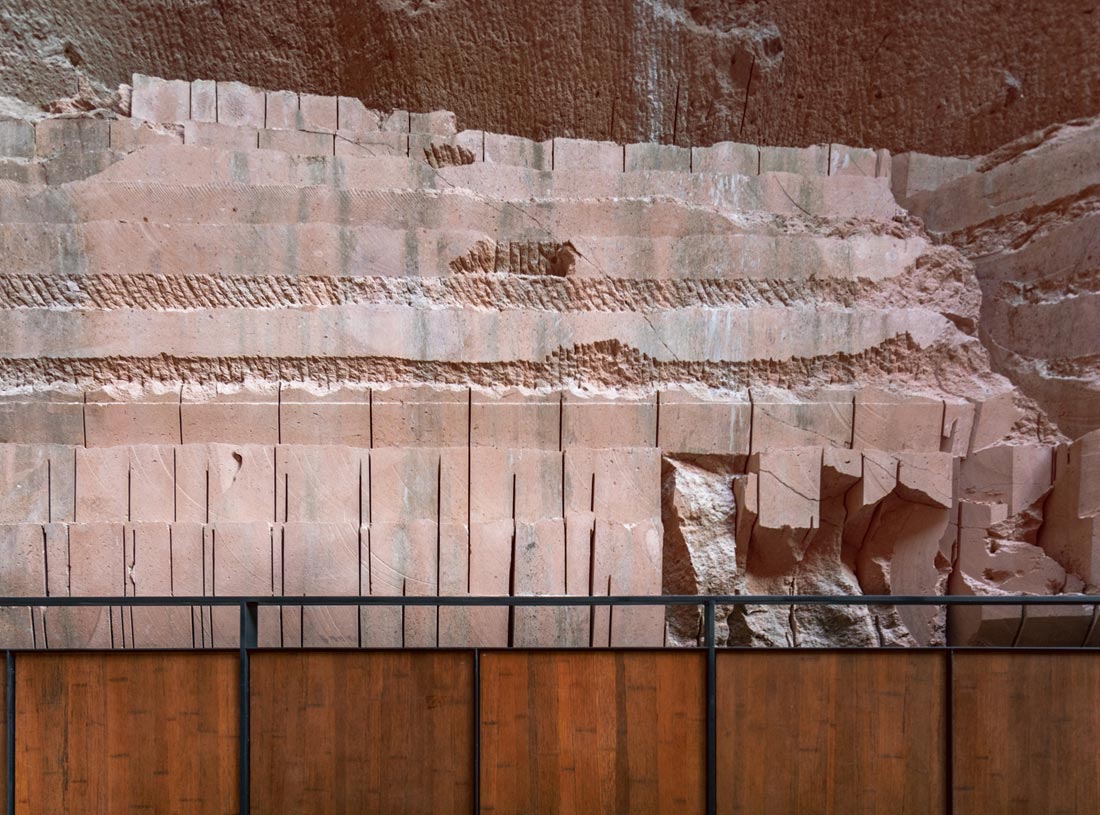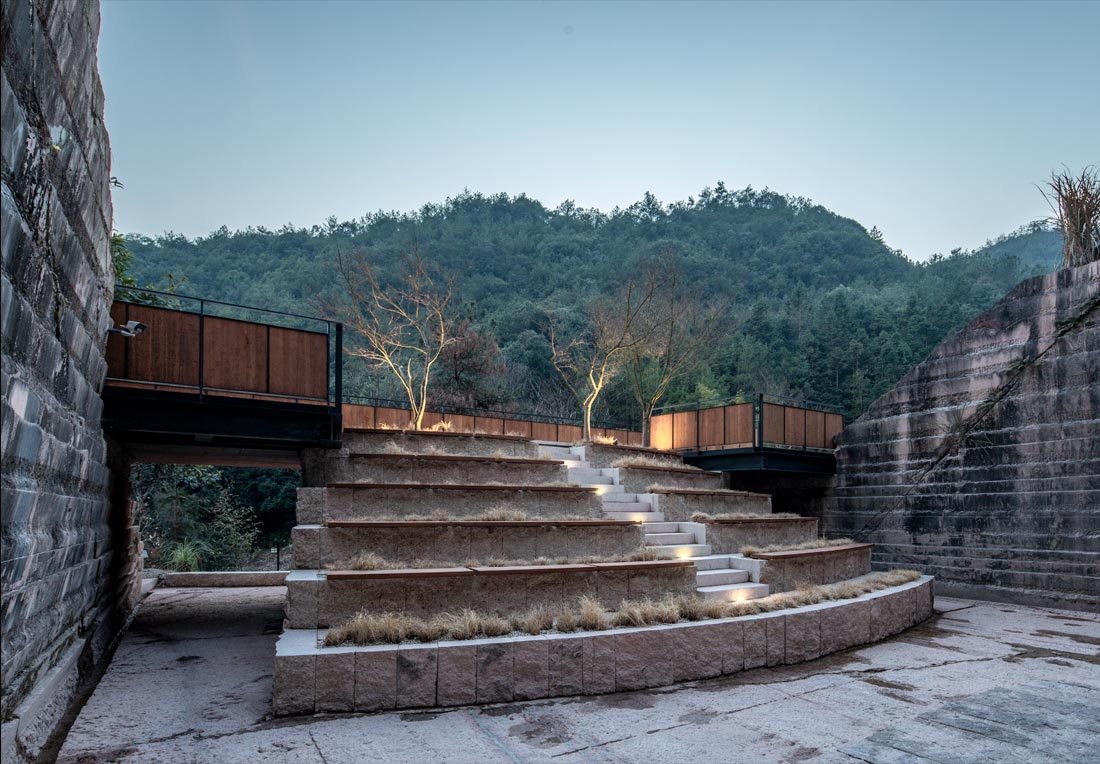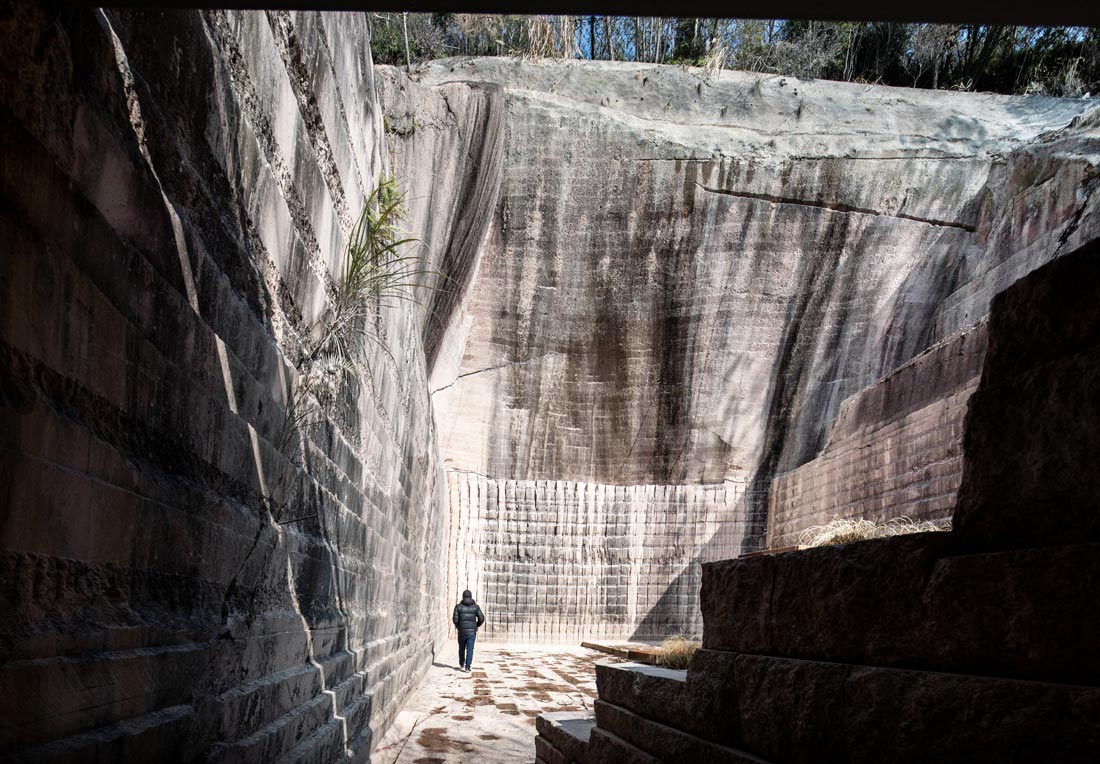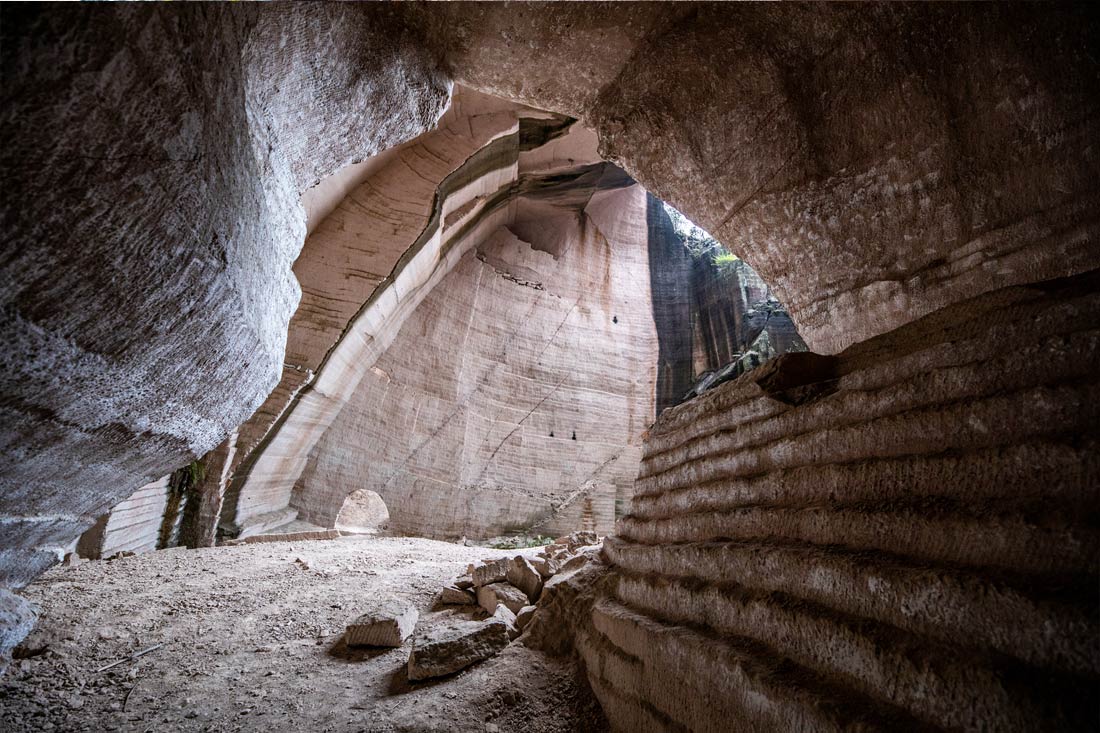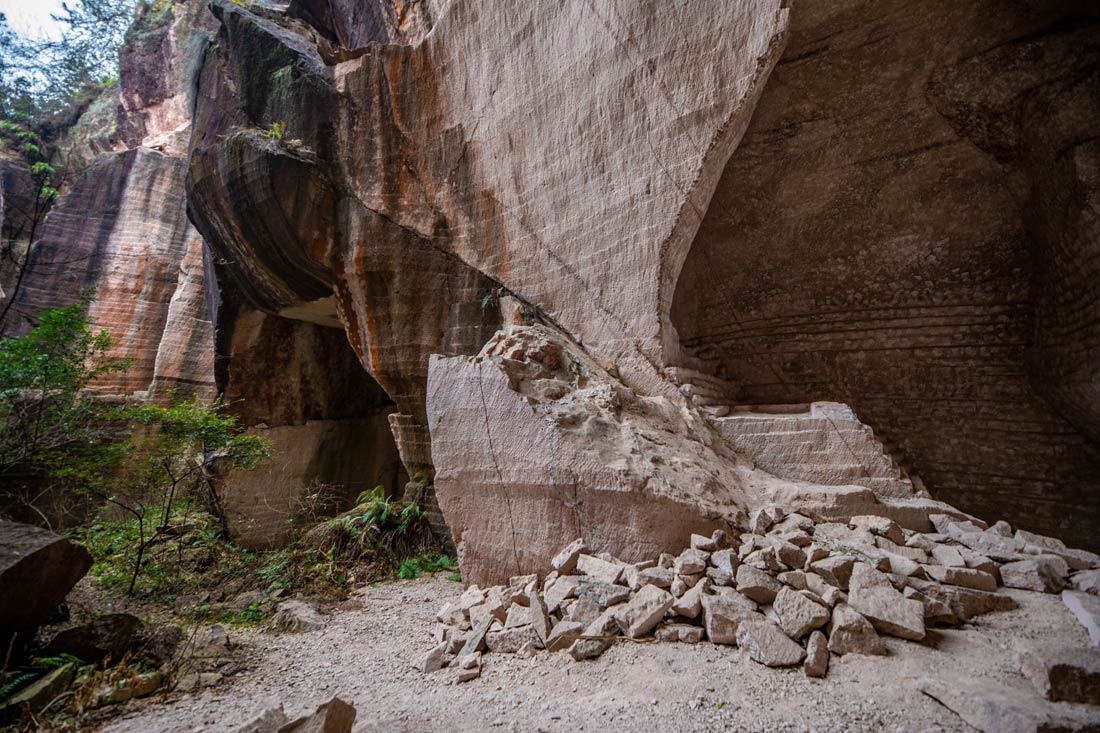Today, reusing and adapting existing spatial resources is regarded around the world as an important contribution to sustainable development. As a result, new challenges are emerging on the margins of classic building tasks due to the changing opinions on whether to preserve or demolish. Xu Tiantian’s projects in the quarries of Jinyun combine aspects of landscape planning, interior design, artistic installations, and social planning with an economic revitalization of the rural area. In this way, a ruined and exploited landscape becomes the starting point for a new sustainable coexistence linked to a narrative about the history of the site.
Subterranean Space
Natural caves, in which early humans sought shelter from the climate, are regarded as the archetype of enclosed space. To this day, there are inhabited caves all over the world: in Matera, Italy, in Coober Pedy, Australia, and in Spain, Tunisia, and Turkey. The Yaodong buildings dug into the loess in Shanxi Province in China still bear witness to this ecologically sensitive form of dwelling. In all cases, it is a sort of subtractive architecture since rocks or earth had to be removed to create the space. The quarries of Jinyun, in contrast, are not caves that were once used as dwellings, because the spaces were created incidentally by the quarrying of the stone.
The rock in the mountains was regarded as a store of material and the quarry was exploited using simple technology for over 1,000 years, with the stones used locally for building houses. The negative spaces that were created when the rock was extracted resulted from the manual labor and how the stonemasons dug into the mountain. The traces the craftsmen left on the rock faces are a testimony to the history of the location and are now being cast in a new light, like archaeological excavations. This history with its traces of human exploitation becomes the starting point for a sustainable future that offers the local population a new perspective.
Quarries as Potential
In phases of prosperity and urbanization, quarries have sprung up all over the world and bear witness to their exploitation by human beings. In China, too, the unbridled demand for building materials over the past few decades has left many wounds in the landscapes, for which new solutions must be found today.
Famous historic quarries have also been placed under protection if they have special cultural aspects. In Nanjing, for example, the Yangshan Quarry has been listed as a provincial cultural monument since 1956. In it lie three oversized, half-finished stelae weighing between 6,000 and 16,000 tons from the early 15th century, which were intended for the tomb of the founder of the Ming Dynasty, Emperor Hongwu (1328–1398).
There are also famous quarries in Europe, such as in St. Margarethen in the Austrian state of Burgenland, which is now included on the UNESCO World Heritage List as a cultural asset. Stone has been quarried there for over 2,000 years and sculpture symposia have regularly been held there for over 60 years, a fact to which more than 50 contemporary sculptures on the site still bear witness today. In addition, Passion Plays and operas are regularly performed in the open-air venue, attracting thousands of visitors.
Another example was created by the French landscape architect Bernard Lassus, who transformed the Crazannes quarries located next to a motorway in southwest France, to the north of Bordeaux, into a land art project. As part of a motorway service station, he opened up the side embankments along the road and exposed the historic quarry behind them, which has now become a recreation area for motorists.
Genius Loci
In Jinyun, however, things are quite different. The many small-scale quarries, exploited as family businesses, require a specific strategy that meets local needs and brings new meaning to the rural economy as well as the ecology of the region. For the spatial adaptation of the mining sites, Xu Tiantian and her team developed concepts bridging landscape design, land art, and interior design and using the methods of architecture. Typical architectural elements, however – a floor plan, the volume of the rooms, the shape of the roof or the façade – play only a subordinate role or are not present at all. The architect and her team thus concentrated on other aspects that define new qualities as a reaction to the given situation.
Basically, the aim is to realize a new relationship of tension between nature and culture, in which the atmospheric space of experience plays a significant role. The spaces randomly carved into the rock are simultaneously inside and outside, with a concentration on massive materiality. Sunlight enters through narrow openings at the top and stages the spaces in dynamic motion. Artificial lighting, in contrast, is utilized as a stabilizing aspect and thus brings to life the interiors with their static materiality, organic form, and cohesiveness. As an extension of the introverted caves, the architects have planned various platforms with views that repeatedly bring various aspects of the post-mining landscape into focus. The duality of open and closed, of concentration towards the inside and openness towards the outside, creates a tension in which the heterogeneity of the entire landscape can be experienced.
The potential of the new locations that have emerged from the ruins left behind by exploitation develops into a stage for a culture that brings a new perspective to village communities in the region, both ecologically and economically. The decision to undertake the smallest interventions possible, which focus above all on the safety of visitors and the question of meaningful use, is translated by the architect into recognizable images that, as a unique selling point with a collective impact, have transformed the former quarries from a landscape of ruins into a romantic setting. All in all, this is about nothing less than expanding the boundaries of architecture by means of a new ambience based on the spirit of the location and putting architecture at the service of sustainable development.
